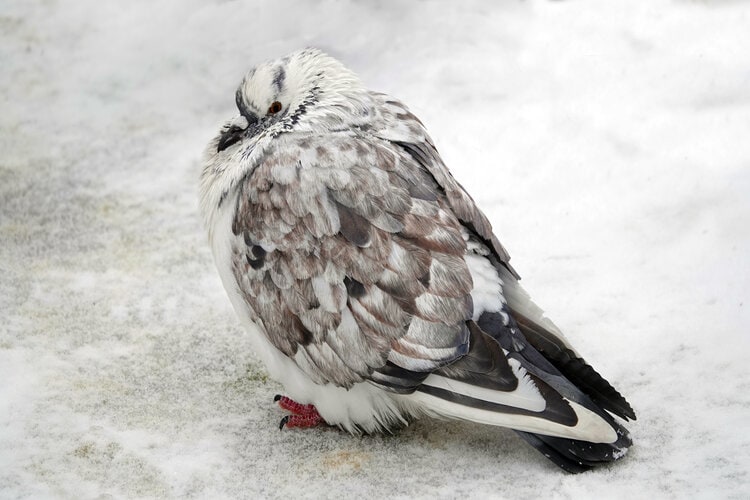
Birds are amazing animals—for one thing, they can fly! Birds do other interesting things, of course, such as puffing up their feathers to make them look like fluffy balloons. But why do birds want and/or need to display such behavior? It has to do with the environment and their interest in keeping themselves comfortable. Here is what you should know.
It’s Mostly About the Time of Year and/or Their Climate
During the winter months, birds that live in the wild will protect themselves from the cold environment in various ways to ensure comfort, warmth, and an optimized chance at survival. One is to puff up their feathers. When the feathers are puffed up, air gets trapped inside. The bird’s body heat then warms the caught air, insulating them and regulating their temperature while exposed to extreme weather.
Birds that live in places where it is cold most of the year will use this technique to keep themselves warm. This isn’t to say that they don’t feel cold, however, because being cold is what causes them to puff up their feathers in the first place.

How Do a Bird’s Featherless Legs Stay Warm in Cold Temperatures?
Most birds have featherless legs, yet those legs do not freeze in cold weather. Birds have an adaptation in their feet which allows for this ability.
A fine, netlike pattern of arteries known as rete mirabile (Latin for “wonderful net”) runs along a bird’s legs and feet. This network of vessels interweaves warm blood coming from a bird’s heart with the cold blood leaving their feet and feet.
This system cools down the blood reaching their legs so that it is “pre-cooled” before reaching the extremities of their feet. As a result of this pre-emptive cooling of blood, the bird does not lose much heat from their feet in colder environments. This is the same adaptation that lets birds comfortably sit on cold wires and metal perches whenever needed.
Parrots have unique adaptations that let them rest on a single foot whenever needed or when they sleep. In colder weather, they may lift a foot off their perch to warm it against their body, alternating feet whenever necessary. In addition, birds may also sit on their feathers in order to warm their legs and feet whenever necessary.
Other Reasons for a Bird Puffing Their Feathers
Another important reason for birds to puff up their feathers is to look bigger. When a bird feels threatened, they may try to protect themselves and/or their offspring by puffing up their feathers so they look larger and more formidable than they really are. This is their most effective form of warning others away, so the sight of a bird with puffed-up wings is not uncommon in the wild. Fluffed wings are easy to spot but typically hard to capture on camera.
Sometimes, birds puff up their feathers to show affection to other birds in their community and to prove their friendship to another bird. Pet bird owners should be cautious that a bird that puffs up their feathers (especially when their other cage mates don’t do the same) might be ill or stressed. If you feel that your bird is unwell, schedule a consultation with your exotic or avian veterinarian.
When they get angry, a bird might puff up their feathers to look more threatening and to try to warn off any predator that thinks about getting them or any males away from the female that they have claimed as their own.
Finally, birds puff their feathers to make preening easier on themselves. Preening is the equivalent of showering for humans or grooming for cats and dogs. This practice ensures that a bird is pristine and free of debris before they move on to another location.

Conclusion
Birds tend to puff up their feathers for various reasons, though it’s primarily due to the environment. If they are cold, they will puff up those feathers. In addition, they may do so as a natural response to a perceived threat or a predator. At other times, they may do so as a sign of an illness or stress. In such instances, a veterinary consult is strongly recommended. There seems to always be a reason for puffing up your feathers as a bird!
Featured Image Credit: Blik Sergey, Shutterstock









